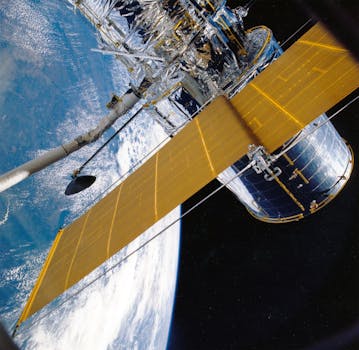
LEO Satellites: Revolutionizing Global Connectivity with Low Earth Orbit Technology
LEO satellites, or Low Earth Orbit satellites, are a type of satellite that orbits the Earth at an altitude of around 160 to 2,000 kilometers. This technology has been gaining popularity in recent years due to its potential to provide high-speed, low-latency internet connectivity to remote and underserved areas around the world. At the beginning of this new era of LEO satellites, it is essential to understand the basics of this technology and its applications.
One of the key advantages of LEO satellites is their ability to provide low-latency connectivity. Because they are closer to the Earth’s surface than traditional geostationary satellites, LEO satellites can offer latency as low as 20-30 milliseconds, which is comparable to fiber-optic cables. This makes them ideal for applications that require real-time communication, such as video conferencing, online gaming, and virtual reality.
How LEO Satellites Work
LEO satellites work by using a network of satellites in low Earth orbit to provide internet connectivity to users on the ground. Each satellite acts as a relay station, receiving data from users and transmitting it to other satellites or to ground stations. The data is then routed through the network to its final destination, providing a high-speed and low-latency connection.
LEO satellites use a variety of frequencies to communicate with users, including Ka-band, Ku-band, and C-band. These frequencies offer different trade-offs between bandwidth, latency, and cost, allowing LEO satellite operators to tailor their services to specific applications and markets.
Applications of LEO Satellites
LEO satellites have a wide range of applications, from providing internet connectivity to remote and underserved areas to enabling IoT (Internet of Things) devices and supporting emergency response and disaster recovery efforts. Some of the key applications of LEO satellites include:
Providing internet connectivity to remote and underserved areas, such as rural communities, islands, and developing countries. Enabling IoT devices, such as sensors and trackers, to communicate with the cloud and other devices. Supporting emergency response and disaster recovery efforts by providing critical communication infrastructure.
LEO satellites are also being used for Earth observation, weather forecasting, and climate monitoring. They can provide high-resolution images of the Earth’s surface, track changes in the environment, and monitor weather patterns.
Challenges and Future Directions
While LEO satellites offer many advantages, they also face several challenges, including interference, regulatory issues, and the need for significant investment in infrastructure. As the number of LEO satellites in orbit increases, there is a growing concern about interference between different satellite systems and with other wireless technologies.
Regulatory issues are also a challenge, as governments and international organizations work to develop frameworks for managing the use of LEO satellites and ensuring that they do not interfere with other satellite systems or wireless technologies.
Despite these challenges, the future of LEO satellites looks bright. Many companies, including SpaceX, Amazon, and OneWeb, are investing heavily in LEO satellite technology, and new applications and services are being developed all the time.
In conclusion, LEO satellites are revolutionizing global connectivity by providing high-speed, low-latency internet access to remote and underserved areas. With their ability to offer low-latency connectivity, LEO satellites are ideal for applications that require real-time communication, such as video conferencing, online gaming, and virtual reality.
